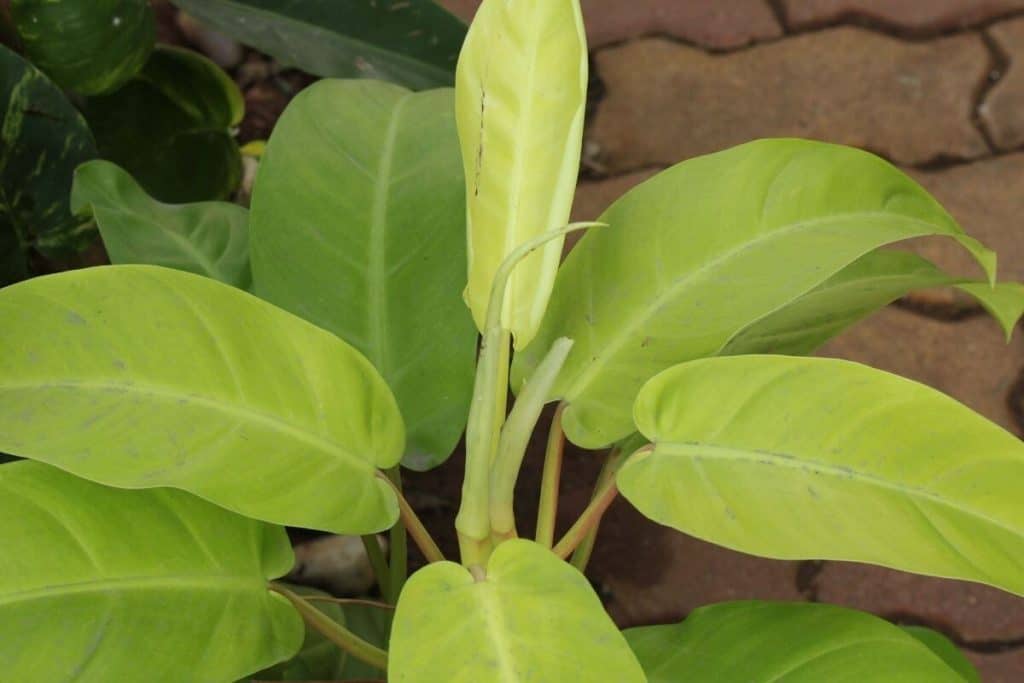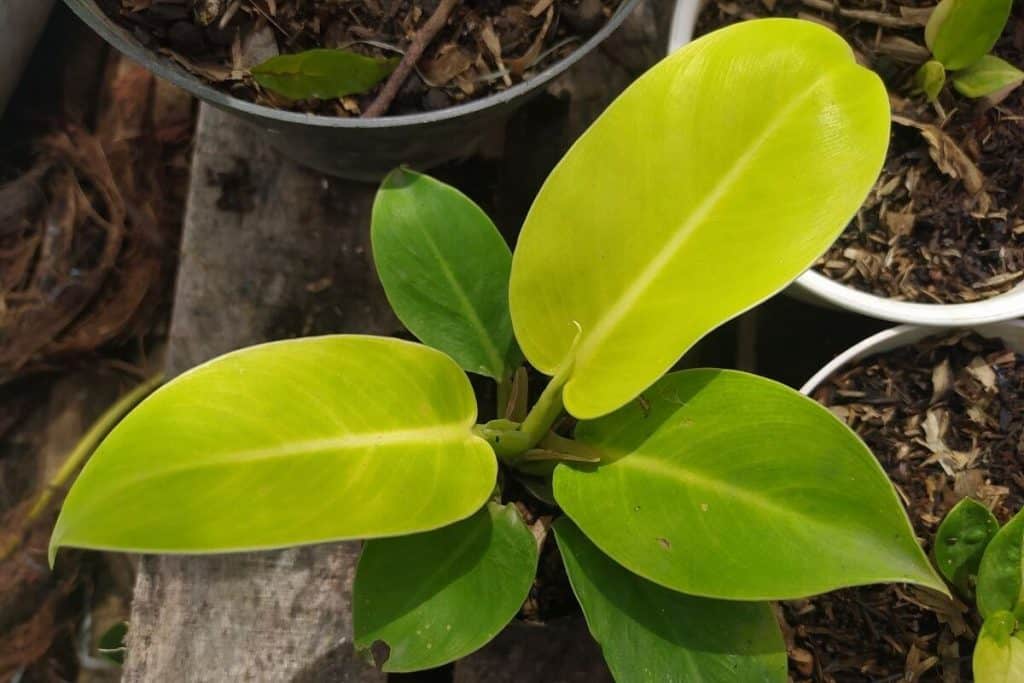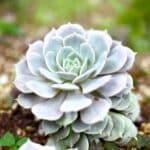If you’re considering getting Philodendron Thai sunrise, which is the most unique and rare philodendron variety, then you shouldn’t do so until you read this article.
Out of over 470 Philodendrons varieties, the Philodendron Thai sunrise care is the rarest, and it’s in great demand among collectors of rare and unusual plants. You need to put in all your efforts to take care of this plant!
Now, we are interested in Philodendron Thai sunrise care. It will be a pity to see this exotic, rare plant wilt away due to insufficient maintenance. While the Philodendron Thai sunrise is quite rare, it is not easy to care for.
The plant is perfect for both beginners and experienced flower growers and, like most Philodendron varieties, prefers bright indirect sunlight, a well-draining soil mix, and at least 50% humidity.
Now, let's get to the particulars of how to grow and care for Philodendron Thai sunrise!
Table of Contents
What Is Philodendron Thai Sunrise?
As already emphasized, the Philodendron Thai sunrise is a rare variety in the Philodendron family. Philodendron Thai sunrise is characterized by unique, distinctive, and shiny leaves with magnificent dark and lime green patterns.
It's 7 to 10 inches long leaves grow on yellow stems. This striking dissimilarity further emphasizes the vivid appearance of the plant.
You will appreciate the elegance and exotic beauty of the Philodendron Thai sunrise when you place it close to bright lights. Note that this plant thrives best in filtered sunlight, so you don't want to leave it under the sunlight for too long.
Excess direct sunlight will make the plant have a sunburn. The Philodendron Thai sunrise can survive in a shady location, but if you want this plant to flourish greatly, place it in a bright spot. Philodendrons grow well in a well-draining mix.
Read Also: How to Care For Philodendron Red Moon
Philodendron Thai Sunrise Care

This is probably the time you are waiting for – how to take of this rare and unique Philodendron variety.
Below are some of the requirements your Philodendron Thai sunrise needs to stay healthy and flourish.
Philodendron Thai Sunrise Water Requirements
You need to establish a watering schedule on how to water your Philodendron Thai sunrise.
This plant should be watered with lukewarm water once every two weeks in the summer and spring periods. You may want to ease down on watering during the winter period to twice a month.
The amount of water used should be based on variations like the plant’s environment, room temperature, exposure to sunlight, and plant or pot size.
If you're yet to establish a watering schedule, water the soil only when the topsoil, at least two inches deep, is dry to the touch. Do not make the mistake of watering the soil if it is still moist or damp.
Philodendron Thai Sunrise Light Requirements
Replicating the natural habitat of the Philodendron Thai sunrise means that you need to provide this plant with bright, diffused light.
The Philodendron Thai sunrise grows in the bright shade of high tropical vegetation protected from direct light in their natural habitat.
Providing your Philodendron Thai sunrise with bright, indirect light will keep the neon-yellow leaves vibrant and striking.
Place your Philodendron Thai sunrise next to the east or west window or a few feet from the south window.
The Philodendron Thai sunrise flourishes better under bright, indirect light. While the Philodendron Thai sunrise is sun-loving Philodendron, making the mistake of placing this plant under direct sunlight will lead to sunburn on its beautiful leaves.
While Philodendron Thai sunrise can survive in shady positions for some time, the lack of light will affect its growth and make its leaves more petite and less vibrant.
Philodendron Thai Sunrise Soil Requirements
If you’re familiar with the many Philodendrons varieties, you should know that most Philodendrons prefer nutritious and well-drained soil that does not retain moisture around the root system. The Philodendron Thai sunrise is no different.
If you can’t lay your hands on this soil type, you can mix standard substrate for houseplants with sand or perlite in equal proportions.
Alternatively, mix all-purpose substrate, peat moss, and perlite, or mix a commercial substrate for houseplants with a substrate intended for growing cacti and succulents.
Any of these mixtures will provide your plant with needed nutrients, increase drainage, provide as much permeability as possible, and allow your plant to grow stronger.
Potting Philodendron Thai Sunrise
We recommend that Philodendron Thai sunrise be planted in pots or containers so you can regulate the plant’s needs better. It is always advisable to get a stable pot that is 1 to 2 inches larger than in root ball diameter.
The Philodendron Thai sunrise needs enough space for healthy growth. But at the same time, you do not want to give this plant 'too much space' by growing it in a pot that's too big. This will make the plant develop just roots instead of growing leaf mass.
Any type of pot will suffice for growing Philodendron Thai sunrise; just ensure that it has a drainage hole that will provide excess water to drain.
To improve the drainage capabilities of the plant, place a layer of coarse gravel and broken tiles above the drainage opening.
Repotting Philodendron Thai Sunrise
Does Philodendron Thai sunrise need to be repotted? Yes, it does! The Philodendron Thai sunrise is a fast grower and draws nutrients rapidly from the soil.
Thus, there is a need to transplant the plant to a bigger pot once part of the root system starts coming out of the drainage hole.
The pot chosen should be two inches larger than the previous one and should be filled with a potting mix of similar composition to the one in which the plant has already grown.
The repotting or transplanting process should be done carefully since the Philodendron Thai sunrise is averse to big changes.
Provided that part of the root system doesn’t start poking out of the drainage holes, the Philodendron Thai sunrise can actually stay in the same container size for a long time.
Most experienced plant growers prefer to just replace only the top of the substrate in the pot without removing the plant from the container.
Read Also: Philodendron Jungle Boogie Vs Xanadu
Fertilizing Philodendron Thai Sunrise
As mentioned above, the Philodendron Thai sunrise is a fast grower that consumes nutrients rapidly and thus will definitely benefit from additional nutrients. Fertilizing will boost the growth and metabolism of this plant.
The plant should be fed with fertilizer once a month, from spring to fall. We recommend you use a liquid fertilizer of balanced NPK ratio or fertilizer intended for plants with decorative leaves.
In winter, you will need to increase fertilizer application since, at this period, the plant’s metabolism slows down a bit.
Philodendron Thai Sunrise Humidity Requirements
The Philodendron Thai sunrise Being a tropical plant prefers elevated levels of humidity in its environment. The plant will thrive better when the humidity level exceeds 50% but can still tolerate humidity lower than 50%.
It’s worth noting that while this plant can survive low humidity, it thrives and flourishes when the humidity level is quite high.
You can change the humidity levels in the plant’s immediate surroundings by spraying the leaves with lukewarm water weekly. Alternatively, use a humidifier or a pebble tray.
Philodendron Thai Sunrise Temperature Requirements
We recommend that the Philodendron Thai sunrise be grown indoors so you can control its temperature. This plant can actually thrive outside In the USA zones, 9 to 11 all-year-round without any problems.
In the summer period, you can place this plant on the balcony or in the garden in a shady place – the Philodendron Thai sunrise will actually benefit from this movement.
The Philodendron Thai sunrise will thrive at a uniform temperature between 60 and 75Fº throughout the year, although the plant can withstand temperatures below 50F.
This, however, will slow down the plant's growth rate, and attempting to use fertilizer during circumstances like this will end up destroying your beautiful Philodendron Thai sunrise.
How to Prune Philodendron Thai Sunrise
Do you really need to prune your Philodendron Thai sunrise? Well, you need to make sure that the plant needs to be pruned before moving on.
Only prune your Philodendron Thai sunrise when it starts overgrowing its surroundings and taking up too much space.
Always prune in the spring or fall season and always sterilize pruning tools such as scissors to prevent potential bacteria spread.
How to Propagate Philodendron Thai Sunrise

The recommended way to propagate the Philodendron Thai Sunrise is by stem cuttings in water.
Follow the guidelines below to propagate your Philodendron Thai sunrise. Note that propagation should only be done when the plant is strong and healthy.
- Find a node
- Cut the stem 0.5 to 1 inch below the node
- Get rid of any lower leaves and leave just one or two at the top
- Put the cutting into a glass with lukewarm water and replace the water with fresh water once every 3-5 days
- Wait till the roots have grown to about 3 inches in length, then place the cuttings in a well-draining potting mix
Common Diseases That Affect Philodendron Thai Sunrise
While the Philodendron Thai sunrise is durable and tolerable plants, sometimes they can be susceptible to diseases caused by fungi or bacteria, especially when they're not taken care of properly.
Some common diseases that affect Philodendron Thai sunrise are:
1. Root rot
This happens when the unsterilized pot is used to plant your Philodendron Thai sunrise. Root rot is caused by fungi, and some noticeable indicators that your plant is suffering from this disease include leaf dropping and browning.
Overwatering and over-fertilizing your Philodendron Thai sunrise might help accelerate the damage of this disease.
2. Bacterial leaf spot
This disease mostly occurs when you splash water all over plants. The disease starts by leaving tiny water-soaked spots on the leaves.
With time these spots will expand to dark lesions and spread all over the plant! If left untreated, your plant might develop a very uncomfortable fishy odor.
Once you notice this symptom, removing the affected leaves is an excellent way to stop the bacteria from spreading. Also, you need to be careful when watering your plant not to accelerate the disease.
Pests That Affect Philodendron Thai Sunrise
Pests attack Philodendron Thai sunrise when they are weakened and stressed. When your Philodendron Thai sunrise lacks nutrients and proper moisture, they are susceptible to problems like spider mites and scale attacks.
You will want to deal with pest infestation head-on if you don’t want the leaves of your plant will turn yellow or twist.
Watering your plant with force is an effective way to dislodge these pests or, better still, opt for chemical pesticides such as soaps, and neem oil, which removes these bugs on contact.
Frequently Asked Questions
Can Philodendron Thai Sunrise Tolerate Morning Sun?
Yes, the Philodendron Thai sunrise can tolerate morning sun
Does Philodendron Thai Sunrise Do Well in Shade?
While Philodendron Thai sunrise can survive in shady positions for some time, the lack of light will affect its growth and make its leaves smaller and less vibrant.
Is the Philodendron Thai Sunrise toxic?
All Philodendron varieties are toxic, and the Philodendron Thai sunrise is no different. The Philodendron Thai sunrise is a poisonous plant and contains calcium oxalate, which can cause rash or skin irritation. It also causes vomiting, diarrhea, and swelling of the tongue and lips when ingested.




